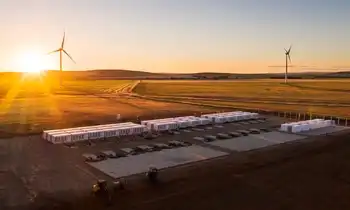N.S. abandons Atlantic Loop, will increase wind and solar energy projects

CSA Z462 Arc Flash Training - Electrical Safety Essentials
Our customized live online or in‑person group training can be delivered to your staff at your location.

- Live Online
- 6 hours Instructor-led
- Group Training Available
Nova Scotia Clean Power Plan 2030 pivots from the Atlantic Loop, scaling wind and solar, leveraging Muskrat Falls via the Maritime Link, adding battery storage and transmission upgrades to decarbonize grid and retire coal.
Key Points
Nova Scotia's 2030 roadmap to replace coal with wind, solar, hydro imports, storage, and grid upgrades.
✅ 1,000 MW onshore wind to supply 50% by 2030
✅ Battery storage sites and New Brunswick transmission upgrades
✅ Continued Muskrat Falls imports via Maritime Link
Nova Scotia is abandoning the proposed Atlantic Loop in its plan to decarbonize its electrical grid by 2030 amid broader discussions about independent grid planning nationwide, Natural Resources and Renewables Minister Tory Rushton has announced.
The province unveiled its clean power plan calling for 30 per cent more wind power and five per cent more solar energy in the Nova Scotia power grid over the coming years. Nova Scotia's plan relies on continued imports of hydroelectricity from the Muskrat Falls project in Labrador via the Emera-owned Maritime Link.
Right now Nova Scotia generates 60 per cent of its electricity by burning fossil fuels, mostly coal, and some increased use of biomass has also factored into the mix. Nova Scotia Power must close its coal plants by 2030 when 80 per cent of electricity must come from renewable sources in order reduce greenhouse gas emissions causing climate changes.
Critics have urged reducing biomass use in electricity generation across the province.
The clean power plan calls for an additional 1,000 megawatts of onshore wind by 2030 which would then generate 50 per cent of the the province's electricity, while also advancing tidal energy in the Bay of Fundy as a complementary source.
"We're taking the things already know and can capitalize on while we build them here in Nova Scotia," said Rushton, "More importantly, we're doing it at a lower rate so the ratepayers of Nova Scotia aren't going to bear the brunt of a piece of equipment that's designed and built and staying in Quebec."
The province says it can meet its green energy targets without importing Quebec hydro through the Atlantic loop. It would have brought hydroelectric power from Quebec into New Brunswick and Nova Scotia via upgraded transmission links. But the government said the cost is prohibitive, jumping to $9 billion from nearly $3 billion three years ago with no guarantee of a secure supply of power from Quebec.
"The loop is not viable for 2030. It is not necessary to achieve our goal," said David Miller, the provincial clean energy director.
Miller said the cost of $250 to $300 per megawatt hour was five times higher than domestic wind supply.
Some of the provincial plan includes three new battery storage sites and expanding the transmission link with New Brunswick. Both were Nova Scotia Power projects paused by the company after the Houston government imposed a cap on the utility's rate increased in the fall of 2022.
The province said building the 345-kilovolt transmission line between Truro, N.S., and Salisbury, N.B., and an extension to the Point Lepreau Nuclear Generating Station, as well as aligning with NB Power deals for Quebec electricity underway, would enable greater access to energy markets.
Miller says Nova Scotia Power has revived both.
Nova Scotia Power did not comment on the new plan, but Rushton spoke for the company.
"All indications I've had is Nova Scotia Power is on board for what is taking place here today," he said.











